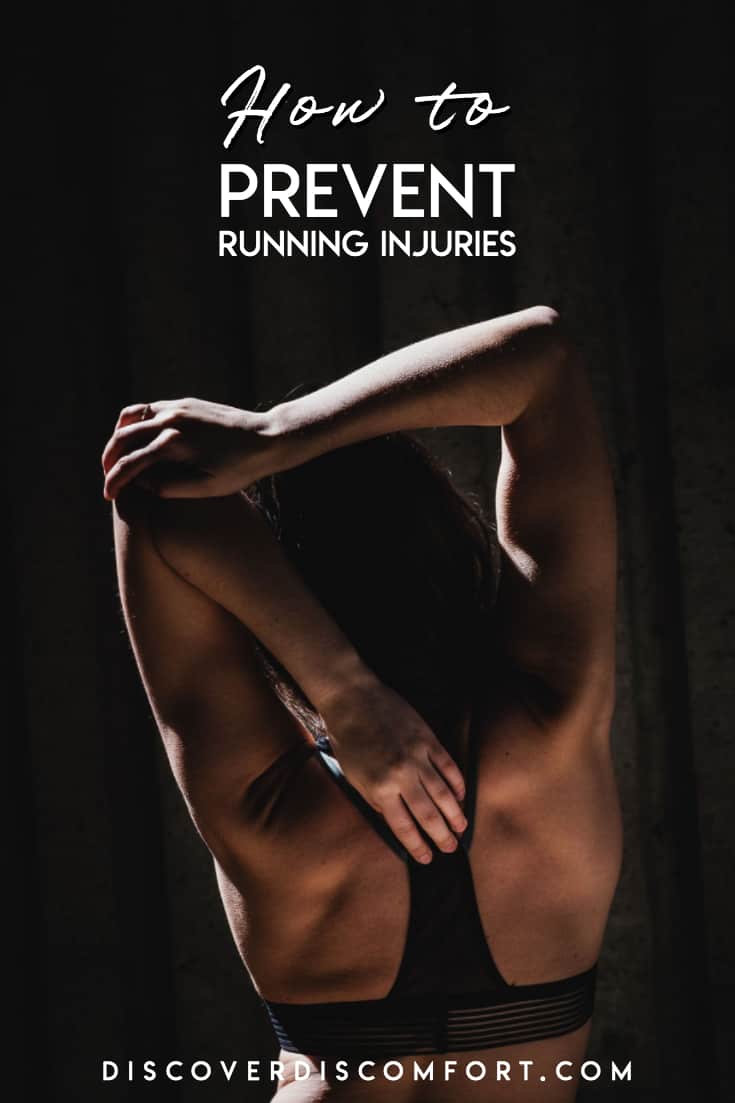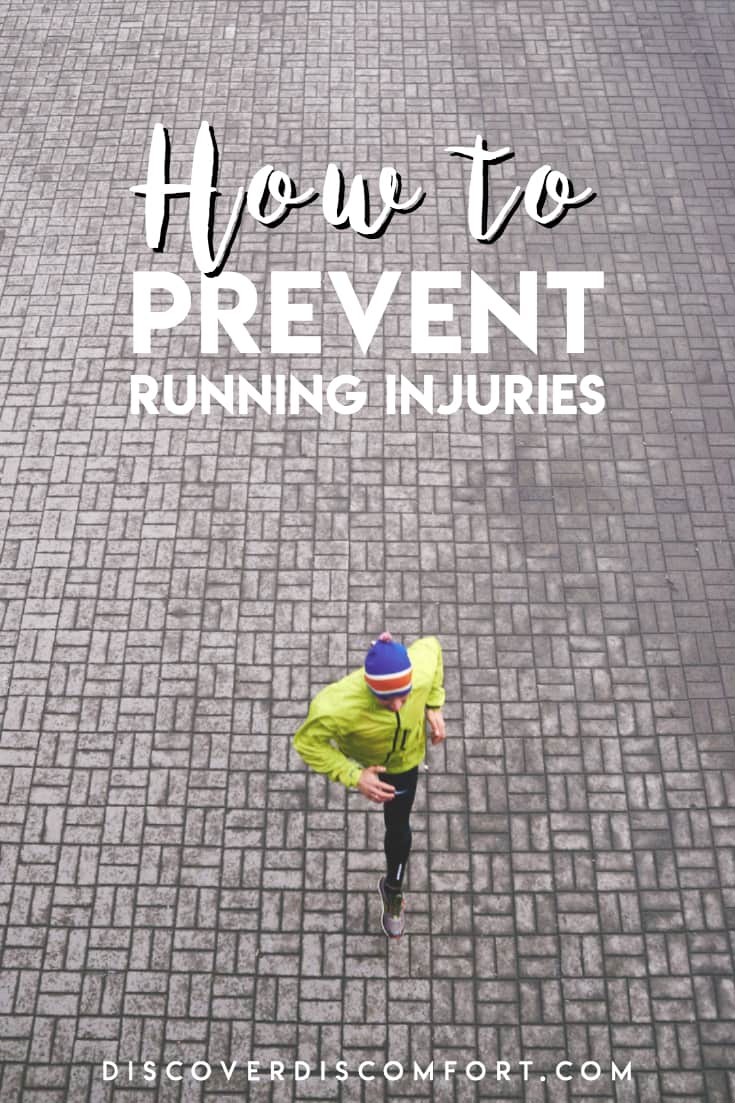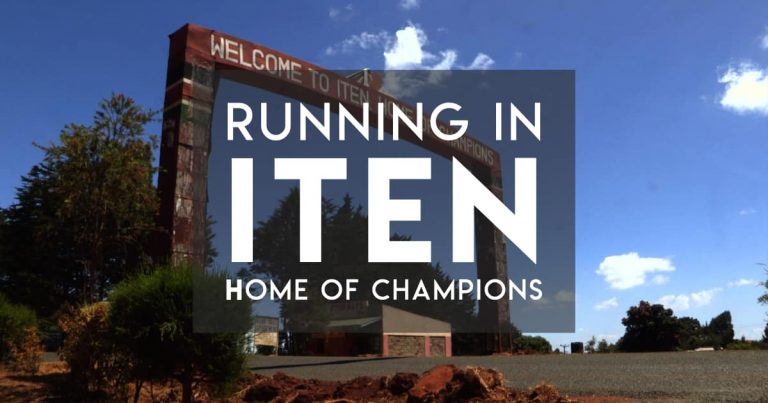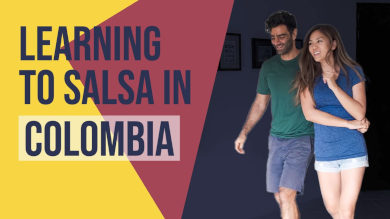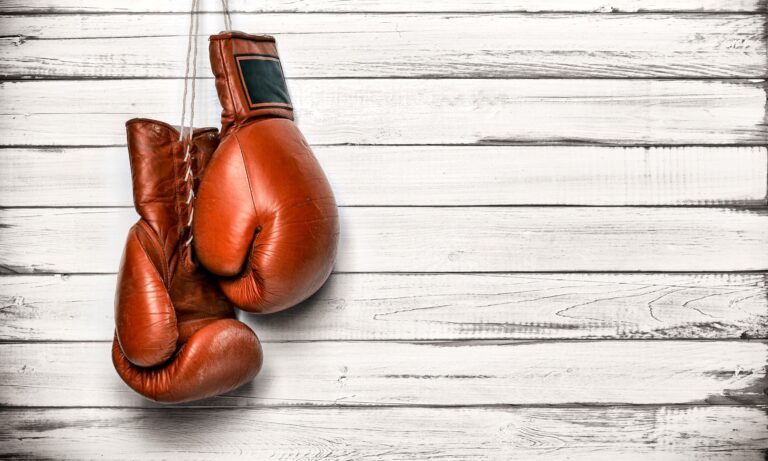Preventing Running Injuries — Summary of “Ready to Run”

In the quest to run faster and longer, I’ve been doing a bit of reading on form. I keep hearing snippets of things like “runners always get injured” or “you should watch these runners to learn good form”.
(By the way, if you’ve forgotten. Discover Discomfort is more than about just learning languages and travel — we’re all about learning about the world and ourselves by doing difficult things, and pushing ourselves out of our comfort zone).
One world-renowned expert on mobility is Kelly Starrett. Starrett believes “mobility” (quantified stretching) is the way to prevent athletes from developing injuries and enabling them to perform at their highest potential. I first came across him because he wrote a book that’s famous in CrossFit circles that’s all about efficient, safe movement in weightlifting to prevent injury.
Now he’s taken the same approach to running, and has co-authored a new book, “Ready to Run“, co-authored by Kelly Starrett and TJ Murphy.
In this, the co-authors Starrett and Murphy lay down a series of lessons and behavioural guidelines for running long distances injury-free. Their motivation is to counter-act the tendency most runners have to “enter the pain cave”.
Runners, especially distance runners, embrace injuries as a fact of life. Inflamed knees, swollen ankles, shin splints, painful achilles tendons — there are things you can do to avoid them, but you can never escape them. Great runners are venerated for being able to run through pain.
Starrett and Murphy are horrified at this. They say it’s crazy to constantly push through injuries and pain. Maybe in an occasional race, but when people do it in daily life, it’s doing more harm than good.
“Someday, when the time comes, I want you to be the badass at the all-comers track meet who is the only one in the 90-to-95-year-old age group to report to the starting line for the 400 meters.” (p. 35)
Staying a runner is the key motivation here—not having to trade in your morning run for reading the newspaper on the Lifecycle. Running through pain and injury has repercussions. There’s no getting away with it: It is how you do more damage or wear things out for good. (p. 143)
The principles they lay down in the book are what they believe will help people run injury-free for as long as possible in our lives.
Here are the main lessons from the book. I’ve grouped them into larger sections, though this isn’t how they’re presented in the book. I didn’t include the detail on the stretches/mobility to do, so for that you’ll have to do more googling (or find the book).
Contents
Improve your mobility and form in everyday life
One thing the authors profess constantly is that training never stops. You can incorporate an athlete’s mindset into your everyday life. For example, they constantly mention how bad sitting is for you, hurting your range of motion and reducing the effectiveness of your feet, spine and hips.
The following lessons are things they suggest you apply to everyday life that will translate well into your life as a runner.
Walk with Neutral Feet
By maintaining your feet in a neutral position while standing, walking, and running, you’re setting the stage for efficient movement, defined as the way your body was engineered to move… The neutral position, in which your feet are straight and parallel to one another, is the most stable position for your feet. (p. 56)
The “neutral position” is with your toes pointing forwards. Straight feet, parallel to each other. They aren’t splayed out, like duck’s feet, nor pigeon-toed inwards.
Pushing off the ball of our feet is the most stable position for us, they say, and the one that ensures we’ll use the most power, as well as reducing sheer stress on joints.
The things that cause us to have non-neutral feet include a) our daily lives, hunched over on technology, which translates down to our feet via our spine and the arches of our feet, and b) highly-cushioned shoes, which don’t encourage us to develop strong arches.
The book contradicts popular wisdom that the arches of our feet need to be supported by our shoes (or orthotic implants). Just as arches in architecture don’t need additional support, neither do our feet.
Flip-flops, high heels and high-drop running shoes also hurt our arches in various ways, and should be avoided.
The way to ensure a neutral position: perform a ‘bracing’ sequence, activating your core and aligning your spine periodically during the day, rolling your shoulders down and back, and ensuring your toes point forward.
Keep your Thoracic Spine Supple
The thoracic spine are the middle vertebrae of your back.
While runners tend to think a lot about the muscles and joints from the lower back down through the feet, the thoracic spine, or T-spine, is crucial when it comes to being able to sustain a neutral position in your long-distance running. (p. 81)
You need a supple thoracic spine to keep your head and shoulders into an aligned position, to avoid neck and lower back strain. A tight thoracic spine also messes with your hip function, which allows stress to enter your running form.
We get tight thoracic spines from being hunched over in a lot of daily life — over phones and computers. The consequences are that power and stability aren’t properly conveyed from the lower to upper body, which just translates to pain everywhere. The most common symptoms are neck pain or shoulders that are rolled forwards.
The simplest solution they recommend: periodically, brace and role your shoulders down and back. Catch yourself in the act of being “slumped” and rectify it.
Mobility they recommend: Thoracic Spine Global Smash, Thoracic Spine Double Ball Strip, Anterior Shoulder. These all use a yoga or lacrosse ball.
Learn to Squat Efficiently
Squatting is a movement pattern we all need to do, both statically and under metabolic load.
Analyzing, fixing, and developing your squatting ability will reward you with the ability to activate your all-powerful glutes when you run and open up a clean flow of hip drive into your running. Have you experienced that run where you have a lot of pop off the ground and feel like you’re flying? That’s hip drive. (p. 90)
They pitch it like this: if you can squat well, it means you have organised a few things. It means you have good hip mobility and ankle mobility, have a tight midline, and that you can produce power from your hip.
Their standard is twofold. Firstly, everyone should be able to do a squat below parallel, with knees pushing out, a flat back, feet remaining flat on the ground, toes pointed forwards. And secondly, everyone should be able to maintain form under a ‘Tabata’ high intensity protocol of 10 reps every 30 seconds for four minutes (twenty seconds on, ten seconds rest, eight times).
To practise this ability, they suggest hanging out in the squat position, moving around and pushing knees and ankles out. Do it for a couple of minutes a day.
Learn to Jump and Land well
This is the last chapter in the book, but I think it goes well with other sections on moving efficiently in daily life.
They describe running as a series of jumps. Learning to jump well will thus translate into running.
If you master jumping and landing with good mechanics, you’ll get a feel for good running mechanics. You will put the critical movement pattern involved in your running under the microscope and start to lay a new foundation of quality movement—of moving the way your body is designed to move. And when your body moves the way it’s designed to move, it has an incredible capacity to deliver power and use good positions to dissipate the stress of landing. (p. 170)
The aim of this section is to “reset poor mechanics” that you may have ingrained into yourself after a lifetime of running.
The best way to practise jumping: jump rope! Do both double- and single-legged jumps. They consider this the “autobahn” of improving jump form.
The second way: practice jumping, paying attention to: keeping your toes forwards and knees forwards-outwards and your shins vertical as you set up, bracing your midline and engaging your trunk, and landing with your feet straight and knees still out.
They also suggest various mobilisations, like the double-ball ankle smash, plantar mobilisations, dorsiflexion work, plantar flexion overdrive and adductor smash. Again, look these up.
Improve the range of motion of your hips and ankles
Kelly Starrett made his name in improving mobility. He doesn’t advocate “stretching”. It’s stretching that’s targeted at improving a range of motion of a particular joint. He specifically says you should test, do a bit of mobility work, and then retest and see the improvement.
Each of these sections has a number of recommended drills that are explained in the book, but you can easily just look up guidance on YouTube.
Maximise Hip Flexion
Research comparing 30 runners suffering from chronic injuries with 30 runners who were healthy looked at the level of strength and balance of six different muscles groups in the hips.12 One of the things the researchers noted was that the injured runners had weak hip flexors and abductors. (p. 101)
Here, the authors suggest that by improving your mobiliy and strength of your hip flexors and abductors, you will be less prone to injury. You have to be able to stand up and hold one knee (bent leg) to your chest without using your hands, holding at least 120 degrees between the leg you’re standing on and the knee you have in the air.
Reduced hip flexor mobility comes from two things: Sitting for long periods of time, which encourages your muscles to shorten to that range, and a long career of running, if you already have one behind you.
They prescribe a series of mobility drills to increase your hip flexion, including the a) banded hip single-leg squat, b) double-band hip distraction, c) glute smash and floss and d) hamstring smash and floss. Look these up on MobilityWOD or on YouTube (with Kelly Starrett) to see what they mean.
Maximise Hip Extension
This is a movement standard the authors prescribe that says: you must have enough range of motion in the front of your hips so you can press your hips into full extension.
If when you’re running, you tend to “sweep out’ your foot to move it forwards, you’re lacking in hip mobility.
If you are looping with your foot, you are missing one or more elements of good, powerful hip function. The muscle tissues at the front of your hip, the hip flexor and quads, are short, tight, and mashed up, which robs you of proper hip extension and the ability to maintain internal rotation of your upper leg. This lack of internal rotation effectively spills open your pelvis, and you end up dragging your leg around from foot plant to foot plant. This spillage of stability and power has repercussions throughout your entire running system. It’s a red carpet for the open-foot/knee-cave sequence that gives your joints an ugly twist of shear with every footfall. (p. 111)
To get over this, they prescribe doing the “couch stretch” for a minimum of two minutes a day. This is an extension of the quad stretch runners tend to do before/during runs. The difference is that the quad stretch feels good, whereas the couch stretch will cause many with tight hip flexors to double up in pain.
Other mobility movements they suggest: the single-leg squat, and the psoas smash & floss. Again, Google these and you’ll find videos/guides.
Improve Ankle range of Motion
The standard they set for ankle mobility is considerable, in two ways: You need to be able to do and hold a “pistol” squat with each leg, and you need to be able to sit on your ankles with your chest upright and feet in full flexion (straight).
In the running world, it is widely accepted that stiff, immobile ankles are one of costs of doing business. But the real cost is performance. If you are limited in either plantar flexion (pointing your toe) or dorsiflexion (flexing your foot), then you are leaving a big pile of gold coins on the table in terms of the capacity to use the movement patterns you were born to use and the elastic recoil that translates to power and speed over lengthy spans of road and trail. (p. 122)
The motivation is that your ankles need to be supple, and prevent stiffening the heel cord. If you have an elastic heel cord you get to use more elastic recoil and thus more power and speed.
For this, they suggest plantar mobilisations, dorsiflexion work, plantar flexion overdrive, anterior hip smash and couch stretching (good old couch stretching!)
Use the right gear
Gear can be used as a band-aid, but the authors recommend minimalist shoes and compression socks to remove any band-aids you might already be employing.
Use Flat Shoes
When you have to wear shoes, whether it’s running shoes, work shoes, or combat boots, buy the flat kind, also known as having “zero drop”—meaning that the heel is not raised above the forefoot. (p. 69)
The authors are huge advocates for minimalist — ideally totally flat — running shoes. They also are fans of landing neutrally, rather than on your heels. They say that heel-striking is “eating you alive”. These are common thoughts, but I’m not really sure they’re true (because they’re debated so heavily by many professionals) — see the commentary at the bottom.
You don’t have to go out and get Vibram’s five fingers and embrace it in your life, but they do recommend warming up to running eventually 100% in minimalist shoes, and walking one day a week bare foot (like around your own home). For those of us raised in households where we don’t wear our shoes inside (like, everyone from the Middle East to Far East Asia), this might sound like a strange request!
The rationale for minimalist shoes is that as children, we run barefoot and tend to toe-strike. This is how our feet are supposed to work. As we grow up and wear shoes and adopt sedentary lifestyles, our bodies change shape until heel-striking seems more natural. This caused pain, which gave rise to cushioned shoes with arch support, which discouraged arch development and created a vicious cycle. It’s a tempting pattern of thought to follow.
A few anecdotal stories are told of podiatrists helping patients by prescribing zero-drop shoes and exercises helping people out of pain.
They also hate flip flops, the kind that your toes need to grip on to for them to stay on your feet, saying they’re making your feet work far less efficiently.
For an evolutionary path they recommend:
- Buy zero-drop shoes
- Start introducing minimalist running bit by bit, transitioning into the new shoes (e.g. 10% at a time, per week)
- Doing exercises to make sure your feet and arches are healthy: plantar mobilisations, toe grip, toe-reanimators and calf smash.
Use Compression Socks
This requirement is easy, and it’s just to use compression socks in daily life, especially after training, and on flights. They cost ~US$25 from running stores or online.
When it comes to supporting the notion that compression wear, worn while at rest, can improve blood flow and thus prod the recovery cycle of training, the research is solid. A runner would be prudent to shop for socks with compression of around 20 mmHg for optimal blood flow. (p. 142)
Compression socks are getting popular in a lot of competitive sports. The authors admit this isn’t proof they work, but people like them. Other analyses say that “the evidence appears anecdotal, but the perceived recovery benefits can’t be denied.” Commenters on Reddit agree: they feel good after a run. So this may not be a critical addition for your recovery process, but they don’t appear to hurt.
Improve your Running Hygiene
These sections were about paying more attention to before, after and during your run. Make sure your body is ready,
Warm Up and Cool Down
Basically, always make time to warm up and cool down.
Training is not about the workout alone. It’s also about how you prepare for the workout and how you close it out. You train to make your body stronger, faster, more durable, and better able to sustain long efforts. You train to incur these sorts of physical adaptations within your body. (p. 130)
Warm up with walking, stretching priority areas and then with something intense, like burpees, lunges or jump rope. They’re big fans of jump rope in particular, because it has benefits for foot strength and waking up your foot strike.
Cool down with mobility work, plus an easy 5-15 minute bike ride, work or light bodyweight movements.
Target hotspots with “Floss” band compression
If you feel pain during or after moving, then what you were doing was not functional movement. (p. 146)
Runners should stop when they feel pain, return home, and target pain hotspots with “Voodoo Floss”.
Hydrate Effectively with Salt and Electrolytes
A hard-training athlete wants to hydrate for several reasons. Failing this could cost you as much as 11 percent of your max VO2—the indicator of how much oxygen your body can process for the sustained output of running power—as well as properly functioning joints and sliding surfaces between the layers of tissue that are getting scorched in your hard workouts. (p. 159)
The authors want us to drink a minimum of 2-3 litres of water a day, ideally most or all of it enhanced with electrolytes.
My first thought was: is coffee an electrolyte? I need to drink more water.
Luckily, they’re not recommending you go buy Gatorade or some other sugar-laden pre-mixed drink, or even one of the equally-expensive no-sugar varieties. They recommend water, but with modifications:
- Salt. For absorption. Add a pinch of salt to a bottle of water and it’ll be absorbed better into your system.
- Flavours. Various studies have shown you’re likely to drink more water if it’s flavoured; and even more if you have a choice of flavours. These get expensive, but I like them (when I used to have them available, in more developed countries).
General Analysis of “Ready to Run”
I love the premise of this book — that you can (and should) run without pain.
As much as I admire the strength of people who can “enter the pain cave”, I also want to live and perform until I’m old. I don’t want to end up as a runner who can’t squat or do a downward dog without planting their heel. Or much worse, one with an injury.
The authors are definitely credible athletes who are far ahead of me in strength, mobility and endurance. This is my primary requirement for reading anything about fitness — I want to read advice from people who are more capable than me in multiple ways. Starrett is an established authority in mobility, having founded MobilityWOD, and is a frequently-cited expert.
That said — I was a little bothered by the lack of references in the book for some of the larger claims. I think we have to take their experience as being the evidence, which is troubling. (I’m sure they’d agree and would prefer there to be studies.)
For example, the authors want us to run “barefoot”, using minimalist shoes. The problem is: there is no documented, scientifically proven benefit to running barefoot. Daniel Lieberman is often quoted for describing why people are best suited to running with no shoes, as has the book Born to Run, a look at people who run for love, not to win.
But those books have been eclipsed by more recent studies. For example, this study shows there’s no significant difference in injuries between barefoot runners and non-barefoot, just the type of injury. Even Lieberman disclaims his study, saying “Please note that we present no data on how people should run, whether shoes cause some injuries, or whether barefoot running causes other kinds of injuries. We believe there is a strong need for controlled, prospective studies on these issues.”
Similarly, the authors make a simple statement that landing on your heel is “eating you alive”. The descriptions seem to make sense, but it’s easy to convince anyone that anything is damaging themselves if you just talk about repeatedly impacting their feet, ankles and knees tens of thousands of times a week.
When it comes to performance, where you strike with your foot has only been correlated with speed, but not shown to have a causative effect. Some studies, like those referenced in this article, claim that most elite distance runners are front or mid-foot strikers. But other studies of runners in East Africa who grew up running actually bare foot (like this one) show that the majority of those runners are heel strikers.
Finally, most of the book is about the importance of mobility in performing better and performing injury. But there aren’t any references provided; you just have to believe the premise and that the authors know what they’re doing (in this realm, they do). It’s easy to even find credible studies claiming that increased mobility can hinder performance. Generally, it appears that mass experiments trying to correlate mobility to injury occurrence haven’t been done.
All that said — I like mobility. It feels good. I also like being functionally strong and fit, and I know mobility supports that. For those reasons I’ll take on most of what’s suggested in this book, but probably not worry too much about the 6mm “low profile” drop in my Nikes.


